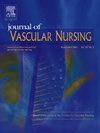Using a standardized pain management approach through regional anesthesia for major limb amputation patients
IF 1.1
Q3 NURSING
引用次数: 0
Abstract
Problem
The Vascular Surgery department at a large academic institution lacked a formalized approach to manage complex pain experienced by patients undergoing major limb amputation (MLA). Consequently, MLA patients averaged 2,352.2 total morphine milliequivalent (MME) and had prolonged hospitalizations averaging 21 days.
Purpose
This quality improvement (QI) project is to create a formalized clinical approach for the provider to manage the MLA patient's pain effectively. This approach ensures the application of evidence-based regional anesthesia (RA) for all eligible MLA patients.
Methods
The 22 providers managing MLA patients assessed a numeric pain score (NPS) at the time of MLA consent. Patients reporting an NPS of four or higher were triaged into the RA section of this process where the provider requested RA application by the pain team. To ensure process completion, these clinicians completed an embedded MLA checklist in the daily progress note. Utilizing a QR code, the providers submitted identified barriers for implementation via a survey. The project lead performed chart audits assessing total MME, NPS, and length of stay (LOS).
Results
Vascular surgeons performed 11 MLAs, with 73 % completing the provider survey and 64 % compliance with the checklist. Of the MLA patients, 64 % reported NPS of four or higher, 57 % of which successfully received RA. The average NPS scores on post-operative day one improved from an average of 4.7 (pre-operative) to 3.2 on post-operative day one. However, the average NPS elevated to a score of five by discharge. These 11 MLA patients averaged a 28.4-day LOS and experienced a significant reduction (approximately 65 %) in total MME from pre-implementation requiring an average of 842.5 MME for their hospitalization.
Conclusions
While the new approach did not show improvement in LOS or NPS, there was a substantial reduction in total MME required by these patients. This formalized framework aids the effective management of the MLA patient's pain. For sustainability, improved education and sedation training of the advanced practice providers will allow for bedside RA application. There is a marked need to develop a formalized transition from RA to an oral pain regimen prior to discharge to provide adequate long-term coverage.
求助全文
约1分钟内获得全文
求助全文
来源期刊

Journal of Vascular Nursing
NURSING-
CiteScore
1.40
自引率
0.00%
发文量
33
期刊介绍:
Journal of Vascular Nursing provides clinical information regarding aortic and peripheral aneurysms, upper and lower extremity arterial disease, acute and chronic venous disease, and more. Original, peer-reviewed articles present descriptions, etiologies, diagnostic procedures, medical and surgical treatment and nursing implications of vascular system disorders.
 求助内容:
求助内容: 应助结果提醒方式:
应助结果提醒方式:


